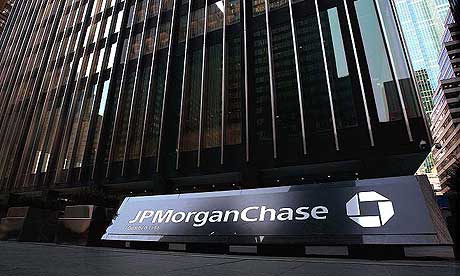 When J.P. Morgan led cabal that created the creature from Jekyll Island this must have been exactly what he had in mind. Nestled there with a small coterie of of bankers whose shared religion is that competition is sin, were he to be alive today would surely say that he had reached a Nirvana. In 1907 Morgan and his banker pals squeezed the credit markets that caused the stock market to crash and sent the economy spinning toward depression.
When J.P. Morgan led cabal that created the creature from Jekyll Island this must have been exactly what he had in mind. Nestled there with a small coterie of of bankers whose shared religion is that competition is sin, were he to be alive today would surely say that he had reached a Nirvana. In 1907 Morgan and his banker pals squeezed the credit markets that caused the stock market to crash and sent the economy spinning toward depression.There was no FED then, but Morgan profited enormously by printing money from nothing and lending it at interest, putting confidence back in the confidence game that he had just crashed picking and choosing who stood in two didn't simply by who he lent to.
Today the credit markets have seized up on their own, a natural consequence of the falling house of Ponzi finance, and it's the federal reserve printing money from nothing and lending and at interest to prop up failing banks and bankers on the backs of working stiffs all the while doling this spoils to the company bearing his name.
“We are down a path that this country has not seen since Andrew Jackson shut down the Second National Bank of the United States,” said GerardCassidy, a banking analyst at RBC Capital Markets. “We are going to go back to a time when the government controlled the banking system.”But it is here in the blue black twilight of Ponzi finance that the best laid plans of the mighty and meek are going astray. For it even as J.P. Morgan has posted a sweet surprise fourth-quarter profit thanks to the generous Washington Mutual morsel it was fed by the United States treasury, one gets the sense that for even the best connected, time is definitely running out.
JPMorgan Chase reported a surprise quarterly profit Thursday, even as the company suffered a hit in its investment banking business and was forced to set aside a chunk of cash for looming loan losses.But a one-time gain of $1.3 billion isn't going to save J.P. Morgan Chase. The bank struggles to make new loans, home loans, issues credit cards and other lines of credit as demand for new loans deteriorates further and the credit crisis sinks in deeper to every aspect of the economy and the psyche. Then as if to drive the point home Dimon announced that the bank would increase its provision for loan losses by $4.4 billion to go along with the $2.9 billion the bank had in write-downs.
Helping boost the results was a one-time gain of $1.3 billion, related to its purchase of the failed savings and loan Washington Mutual last year. Excluding this,JPMorgan Chase said it would have reported a loss of 28 cents per share during the quarter.
You would think that the $25 billion of TARP injections would more than offset the lone loss reserves and write-downs above, but now even the feast of Bear Stearns and Washington Mutual is churning in Morgan's stomach as the meat turns to carrion.
“I hesitate to say this a little bit,” Mr. Dimon said on the analyst conference call referring to Bear’s impact on its earnings. “We probably lost several billion dollars more than we would have in the year had we not done Bear.”This of course means big write-downs for as long as any of us will live. As the acquisitions assets continue to fall below expectations will the bank go back to that well once again?
JPMorgan set aside $32.5 billion to cover WaMu’s bad loans when it bought the bank back in September. But that was based on the assumption that housing prices were going to fall 25 percent from their peak back in 2007. Based on new assumptions that show a 31 percent decline, the loan losses could reach as high as $36 billion, $3.5 billion more than whatJPMorgan had accounted for.
After this sour news, Meredith A. Whitney, the banking analyst for Oppenheimer, asked Mr. Dimon if he would consider making another acquisition to continue building the bank’s capital base.Well Meredith it's not exactly capital base building, it's more like spreading it thin, but you did get the answer you already knew, he would do it in a heartbeat and as you also already know, he will probably have to.
“I would never say never,” Mr. Dimon sighed, “but obviously we are busy with Bear Stearns and WaMu … the hurdle rate would have to be really high to do an acquisition.”


No comments:
Post a Comment